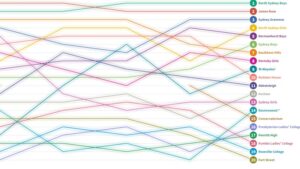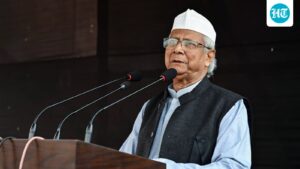
The Dalai Lama has confirmed that a successor will be chosen after he passes, raising questions about the process and potential geopolitical influences. This announcement comes amid celebrations marking his 90th birthday in McLeodganj, Dharamshala, where the spiritual leader resides. The Dalai Lama emphasized the continuity of his institution, responding to appeals from Tibetan spiritual leaders and global Buddhists, including those from China and Tibet.
His statement was made during a significant gathering of Buddhist scholars and monks in Dharamshala, known as “Little Lhasa,” underscoring the cultural and spiritual importance of the event. However, the selection of the next Dalai Lama carries profound geopolitical implications, with potential influences from Beijing, Washington, and New Delhi.
The Traditional Process of Choosing a Dalai Lama
The selection of a Dalai Lama is deeply rooted in centuries-old traditions and spiritual beliefs. The Dalai Lama is considered the reincarnation of Avalokiteshvara, the Bodhisattva of Compassion. Traditionally, the search for a new Dalai Lama begins after a period of mourning, involving high-ranking lamas who interpret signs and visions to identify potential candidates.
These candidates, often young boys born around the time of the previous Dalai Lama’s death, undergo rigorous tests to confirm their identity as the reincarnation. The current Dalai Lama has suggested that a woman could also be a future reincarnation, indicating a potential shift in tradition.
The Current Dalai Lama: A Historical Perspective
Tenzin Gyatso, the 14th Dalai Lama, was identified as a reincarnation at the age of two. His recognition involved a four-year search, culminating in his identification of his predecessor’s belongings. In 1959, following a failed uprising against Chinese control, he fled Tibet for India, marking the end of traditional Tibetan governance and the beginning of his life in exile.
Today, nearly 100,000 Tibetan refugees reside in India, forming the largest Tibetan exile community. The Dalai Lama’s leadership has been pivotal in the Tibetan struggle for autonomy.
Geopolitical Stakes: The Role of China, India, and the US
The selection of the next Dalai Lama is not merely a religious matter; it is a geopolitical issue with significant implications for China, India, and the United States. China insists on its authority to approve the reincarnation, a stance backed by a 2007 law. Beijing’s position is that the next Dalai Lama must be born within China, dismissing any foreign-born successor as illegitimate.
India, hosting the Tibetan government-in-exile, views the succession as intersecting with national security and its complex relationship with China. The US, historically supportive of Tibetan autonomy, has rejected China’s claims, emphasizing that Tibetan Buddhists alone should decide their spiritual leader.
Potential for Rival Dalai Lamas
Experts suggest that after the 14th Dalai Lama’s death, there could be two rival successors: one recognized by the Tibetan community in exile and another appointed by China. This scenario would be unprecedented and could lead to significant challenges for Tibetans inside Tibet, who may be pressured to show loyalty to the Chinese-appointed leader.
“In future, in case you see two Dalai Lamas come, one from here, in free country, one chosen by Chinese, then nobody will trust, nobody will respect [the one chosen by China],” the Dalai Lama remarked in 2019.
Looking Ahead: The Future of the Dalai Lama Institution
The future of the Dalai Lama institution remains uncertain, with significant implications for Tibetan Buddhism and global geopolitics. The current Dalai Lama’s statements suggest a preference for a successor born in a “free world,” potentially outside China’s control. This position aligns with the desires of many Tibetan exiles, who view the Dalai Lama as a symbol of their struggle for autonomy.
As the world watches, the process of selecting the next Dalai Lama will likely involve complex negotiations and international scrutiny. The outcome will not only affect Tibetan Buddhists but also influence broader geopolitical dynamics involving China, India, and the United States.
In conclusion, the path to choosing the next Dalai Lama is fraught with challenges, both spiritual and political. The decisions made in the coming years will shape the future of Tibetan Buddhism and its role on the global stage.





